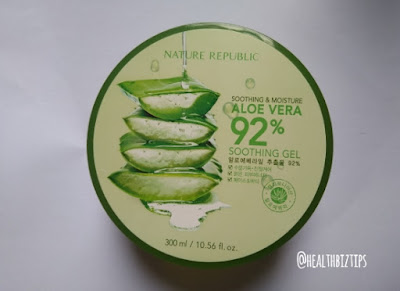IV Cannulation: IV Insertion Tips & Tricks
IV Cannulation: IV Insertion Tips & Tricks
by: Arlene Gentallan
IV insertion is an important indispensable skill, yet you may realize that it is one of the hardest skill to master. While it's not easy, your skill can be improved through continuous clinical practice. Here are some tips and tricks you can apply to do a successful intravenous cannulation:
DETERMINE THE APPROPRIATE SIZE OF CANNULA TO BE USED
There are varying cannula sizes which is measured in gauge. The higher the gauge number, the smaller the size of the needle and it's bore.
Note: If the patient's vein is small, use a small bore cannula so the vein will not blow. If you will use a large bore needle, choose a large vein.
BE CONFIDENT
Even if it's your first time to insert an iv cannula, don't act with uncertainty in front of the patient. Even if you haven't gained experience yet, keep calm and show the patient that you can. Appearing confident, even when you know you're not, will give you positivity and will enable you to gain the trust of the patient.
Be positive. If you have the mindset that you will succeed, your halfway there. If you appear non confident in front of the patient, they may refuse you and ask for someone else. Or they may blame you if you are unable to insert the iv cannula even if the patient's fragile vein is the real cause.
FIND A VEIN
Find a suitable vein for insertion by visualizing and palpating it.
VEIN VISUALIZATION TRICKS
Here are several tips to enable you to better see veins. Veins are usually bluish in color that can easily be seen if engorged.
Apply tourniquet
Apply tourniquet 3-5 inches above the insertion site so this will impede blood flow and dilate (enlarge) the vein for easier palpation and visualization. Make sure that it's not too tight nor too loose.
Rub the area with alcohol
After rubbing a site with cotton balls with alcohol, some veins will become visible.
Press on the site
Press on the area several times with your finger pad, especially if it's edematous to make veins visible. Pressing the area will blanch it's color enabling you to visualize the vein which is bluish in color.
Advice your patient to make a tight fist
This will engorge and dilate the vein.
Advice your patient to wiggle fingers or repeatedly close open palm
Muscle contraction will dilate the vein because it causes the blood to return to the heart which is impeded by the tourniquet.
PALPATE THE VEIN WITH YOUR FINGER PAD
Palpate the vein with your finger so you'll be able to feel if it's a good vein. This will aid you to make the right choice. Feel if the vein is movable or stable. Feel for fullness. It's ideal to choose a stable non-movable vein that feels full.
In cases when you are unable to visualize a vein, palpation is very helpful to know where a vein is.
CHOOSE A VEIN FOR INSERTION
Consider the non-dominant side first
For the convenience of the patient, choose the non-dominant hand as the insertion site. Insert only on the dominant hand if you are unable to find a good site.
Choose a straight vein.
Choose a straight vein that can accommodate the entire length of the cannula. Do not hit a vein over the area where it overlaps with another vein or in an area where a large vein branches to smaller veins because these veins blows more readily.
Start with a distal vein
Choose a vein over the dorsal side of the metacarpal. If you can't find a suitable vein, you can move up.
Avoid inserting above a joint
To prevent the iv site from being displaced by joint movement, avoid inserting over a joint. Avoid inserting over the wrist joint and elbow.
TIPS WHILE INSERTING THE IV CANNULA
Stabilize the vein
Hold a movable unstable vein with the finger of your other hand as you insert the cannula to let you hit the vein.
Advice the patient to relax the area in which you will insert
When you are inserting the needle, advice the patient to relax his/her arm so the vein will not constrict.
Bevel up
Insert the needle with the bevel up. This will allow you ease of insertion of the needle.
Insert at about 15 degree angle
This will prevent you from inserting too deep.
No "fishing"
Don't attempt to insert and retract the needle several times. This is too painful for the patient and increases your chance of blowing the vein.
Check for backflow
Once there is a backflow in the flashback chamber of the iv cannula, that means you've hit the vein, advance the needle further to ensure the iv catheter is inside the vein before retracting the needle and advancing the catheter all the way in.
Retract the needle
Retract the needle as you advance the cannula into the vein. There should be a smooth movement with no resistance once you insert the cannula on the vein.
Release the tourniquet
If the patient's vein is fragile, make sure to release the tourniquet before advancing the cannula to prevent the vein from blowing.
Start IV line slowly
Especially if the patient's vein is fragile, initial iv flow rate should flow very slowly for a few seconds before adjusting to a desired flow rate. This will prevent a weak vein from blowing because of increase pressure.
by: Arlene Gentallan
IV insertion is an important indispensable skill, yet you may realize that it is one of the hardest skill to master. While it's not easy, your skill can be improved through continuous clinical practice. Here are some tips and tricks you can apply to do a successful intravenous cannulation:
DETERMINE THE APPROPRIATE SIZE OF CANNULA TO BE USED
There are varying cannula sizes which is measured in gauge. The higher the gauge number, the smaller the size of the needle and it's bore.
- Gauge 14 - (color Orange) Very large bore cannula reserved for emergency in which rapid fluid resuscitation or medicine administration is needed
- Gauge 16 - (color Gray) Used for surgery
- Gauge 17- (color White) Used for rapid intravenous infusion or blood transfusion
- Gauge 18 - (color Green) Used for blood transfusion
- Gauge 20 - (color Pink) Standard for adult intravenous fluid infusion
- Gauge 22 - (color Blue) Use for pediatrics. Can be used for adults with small vein
- Gauge 24 - (color Yellow) Used for pediatric patients
Note: If the patient's vein is small, use a small bore cannula so the vein will not blow. If you will use a large bore needle, choose a large vein.
BE CONFIDENT
Even if it's your first time to insert an iv cannula, don't act with uncertainty in front of the patient. Even if you haven't gained experience yet, keep calm and show the patient that you can. Appearing confident, even when you know you're not, will give you positivity and will enable you to gain the trust of the patient.
Be positive. If you have the mindset that you will succeed, your halfway there. If you appear non confident in front of the patient, they may refuse you and ask for someone else. Or they may blame you if you are unable to insert the iv cannula even if the patient's fragile vein is the real cause.
FIND A VEIN
Find a suitable vein for insertion by visualizing and palpating it.
VEIN VISUALIZATION TRICKS
Here are several tips to enable you to better see veins. Veins are usually bluish in color that can easily be seen if engorged.
Apply tourniquet
Apply tourniquet 3-5 inches above the insertion site so this will impede blood flow and dilate (enlarge) the vein for easier palpation and visualization. Make sure that it's not too tight nor too loose.
Rub the area with alcohol
After rubbing a site with cotton balls with alcohol, some veins will become visible.
Press on the site
Press on the area several times with your finger pad, especially if it's edematous to make veins visible. Pressing the area will blanch it's color enabling you to visualize the vein which is bluish in color.
Advice your patient to make a tight fist
This will engorge and dilate the vein.
Advice your patient to wiggle fingers or repeatedly close open palm
Muscle contraction will dilate the vein because it causes the blood to return to the heart which is impeded by the tourniquet.
PALPATE THE VEIN WITH YOUR FINGER PAD
Palpate the vein with your finger so you'll be able to feel if it's a good vein. This will aid you to make the right choice. Feel if the vein is movable or stable. Feel for fullness. It's ideal to choose a stable non-movable vein that feels full.
In cases when you are unable to visualize a vein, palpation is very helpful to know where a vein is.
CHOOSE A VEIN FOR INSERTION
Consider the non-dominant side first
For the convenience of the patient, choose the non-dominant hand as the insertion site. Insert only on the dominant hand if you are unable to find a good site.
Choose a straight vein.
Choose a straight vein that can accommodate the entire length of the cannula. Do not hit a vein over the area where it overlaps with another vein or in an area where a large vein branches to smaller veins because these veins blows more readily.
Start with a distal vein
Choose a vein over the dorsal side of the metacarpal. If you can't find a suitable vein, you can move up.
Avoid inserting above a joint
To prevent the iv site from being displaced by joint movement, avoid inserting over a joint. Avoid inserting over the wrist joint and elbow.
TIPS WHILE INSERTING THE IV CANNULA
Stabilize the vein
Hold a movable unstable vein with the finger of your other hand as you insert the cannula to let you hit the vein.
Advice the patient to relax the area in which you will insert
When you are inserting the needle, advice the patient to relax his/her arm so the vein will not constrict.
Bevel up
Insert the needle with the bevel up. This will allow you ease of insertion of the needle.
Insert at about 15 degree angle
This will prevent you from inserting too deep.
No "fishing"
Don't attempt to insert and retract the needle several times. This is too painful for the patient and increases your chance of blowing the vein.
Check for backflow
Once there is a backflow in the flashback chamber of the iv cannula, that means you've hit the vein, advance the needle further to ensure the iv catheter is inside the vein before retracting the needle and advancing the catheter all the way in.
Retract the needle
Retract the needle as you advance the cannula into the vein. There should be a smooth movement with no resistance once you insert the cannula on the vein.
Release the tourniquet
If the patient's vein is fragile, make sure to release the tourniquet before advancing the cannula to prevent the vein from blowing.
Start IV line slowly
Especially if the patient's vein is fragile, initial iv flow rate should flow very slowly for a few seconds before adjusting to a desired flow rate. This will prevent a weak vein from blowing because of increase pressure.







